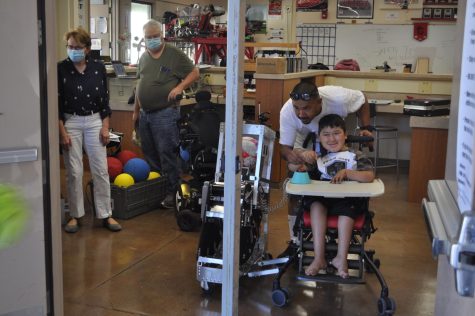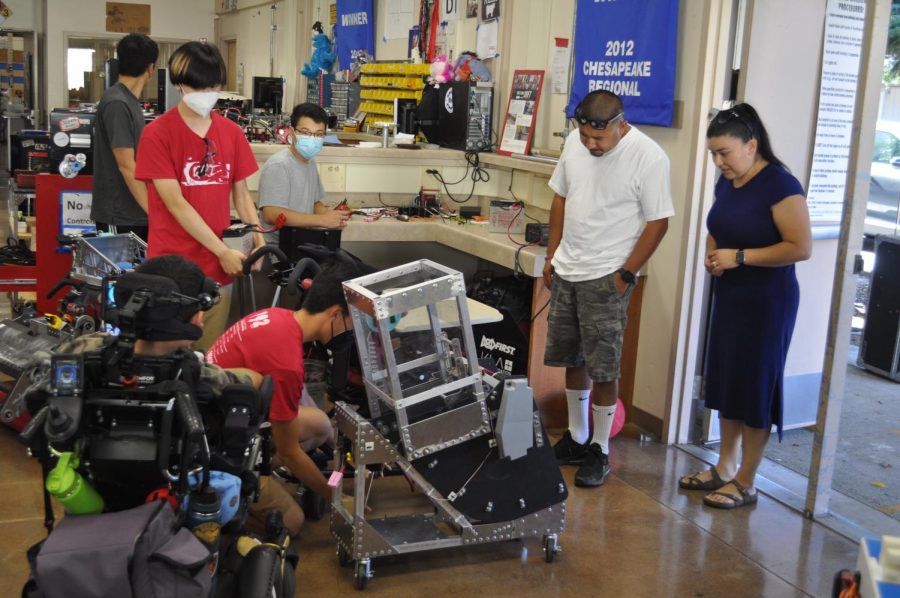Gunn Robotics Team creates wheelchair attachment for elementary schooler
On Thursday Sept. 29, the Gunn Robotics Team (GRT) revealed the results of their wheelchair project, a creation that has been in the works since 2020. The team was originally contacted during distance learning by the support team of Palo Alto Unified School District (PAUSD) elementary schooler Joel Vasquez, a student who had been diagnosed with spinal muscular atrophy (SMA) and uses a wheelchair. The team was tasked with creating a wheelchair attachment that could allow Vasquez to fulfill his dream of passing a ball around with his older brother, a soccer player. After years of designing and building, the team was able to present their completed product to Vasquez, accompanied by his family, teachers and support team.
The wheelchair attachment operates by dropping soccer balls onto a flywheel that is spun at very high speeds, which then transfers its kinetic energy into the soccer ball and propels it forward at the speed of a light kick. Ethan Liang, a GRT member who helped finalize and present the project, noted that there were complex elements of the project that went beyond a typical GRT robot. “It’s really different from what we usually build—for this one, our [electronic circuit] is completely from scratch using Arduinos, so it really challenged our electrical engineering skills, which is not something we practice otherwise,” Liang said.

GRT members were able to design much of the initial project plans over Zoom, but they were unable to come into the workshop and begin construction due to COVID-19 restrictions. GRT mentor Kristina Granlund-Moyer noted that students encountered difficulties during the first year back from distance learning. Through trial and error, however, the members became able to create a product that would satisfy Vasquez’s request. “It’s really been a good process for the students because it’s a product for somebody else. It’s easy to make something for yourself, but for somebody else you have to make it reliable, make sense to use and safe,” Granlund-Moyer said.
After showcasing the project and providing instructions for continued use, GRT and Granlund-Moyer were pleased to have completed their project and to have helped Vasquez come closer to accomplishing his dream. “I am very happy,” Granlund-Moyer said. “[Vasquez] was very happy—I think [the attachment] does what he wants it to do, which is the goal of the product.”
Your donation will support the student journalists of Henry M. Gunn High School. Your contribution will allow us to purchase equipment and cover our annual website hosting costs.

Michael Zhang, a senior, is a Lifestyle editor for The Oracle. His interests include reading, writing and eSports. When he's not working on stories for...


